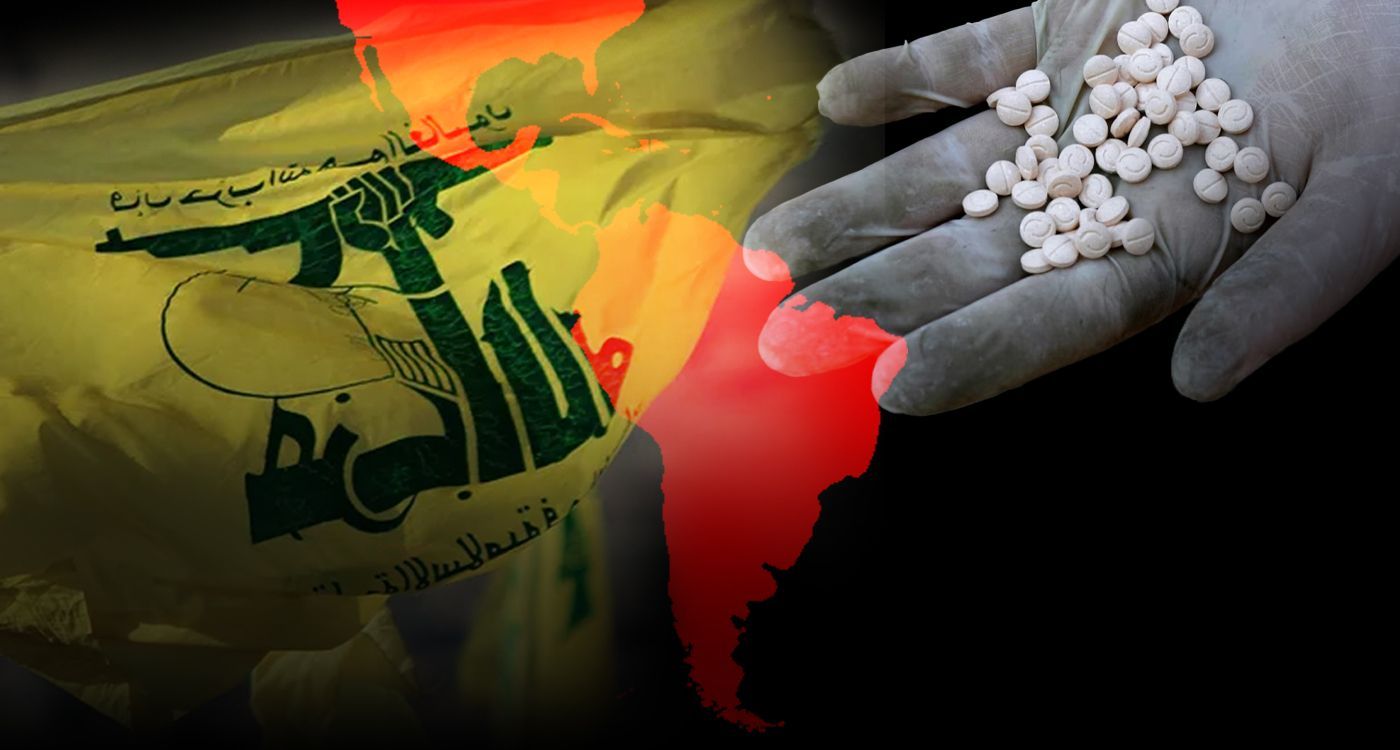- Home
- Highlights
- Mullahs Wearing Sombreros: Hezbollah in Latin America

©This is Beirut
The so-called “tri-border area,” at the junction of Brazil, Argentina and Paraguay, has long attracted tourists, notably thanks to the famous Iguaçu Falls. But behind this idyllic setting lies a much more troubling reality: this region is also a strategic hub for transnational criminal networks, including Hezbollah.
Washington, which is intensifying its efforts against terrorism financing, announced on Monday a reward of $10 million for information on the networks of the pro-Iranian organization in Latin America. This decision is part of a broader process being carried out on two levels: local and international.
Why Now?
An April report by the al-Hadath channel revealed that around 400 Hezbollah commanders are believed to have left Lebanon to redeploy in Latin America, following Israeli strikes and increased pressure from the Lebanese government aimed at disarming the organization.
At the same time, the US is seeking to ramp up pressure on Hezbollah as it appears to be nearing a new agreement with Iran over its nuclear program. The objective is to neutralize Hezbollah’s financial networks, which could serve as instruments of Iranian influence.
Hezbollah’s Activities in Latin America
The pro-Iranian group has been operating in Latin America since the 1980s, developing both financing mechanisms and operational capabilities. The 2008 arrest in Colombia of Chekri Harb, who ran a cocaine trafficking network that paid a 12% “tax” to Hezbollah, illustrates the symbiosis between terrorism and organized crime.
According to a Drug Enforcement Agency (DEA) report, Hezbollah has established business relationships with South American drug cartels, notably La Oficina de Envigado, responsible for supplying large quantities of cocaine to European and American markets. These activities fall under what the DEA calls Hezbollah’s “External Security Organization Business Affairs,” which continues to launder significant drug profits through a money laundering system known as the Black Market Peso Exchange.
Thus, cocaine trafficking has become a source of funding for the group, supplementing financial support from Tehran and granting it increasing financial autonomy. These activities span at least twelve countries in the region, according to a March 2025 RAND Corporation report that meticulously documents Hezbollah’s presence in Argentina, Panama, Peru, Colombia, Venezuela, Brazil, Curaçao, Bolivia, Mexico, Honduras, Guatemala and Chile. Activities include illegal mining in Venezuela and sophisticated money laundering networks in Panama.
In Latin American countries where Hezbollah has established a presence, it has been directly involved in major terrorist activities. The AMIA bombing in Buenos Aires in 1994 killed 85 people, while the attack on the Israeli embassy in 1992 left 29 dead. Both attacks have been formally attributed to Hezbollah by Argentine and US authorities, as confirmed by terrorism charges, US State Department sanctions, and Interpol red notices issued against several members of the organization.
More recently, a foiled plot in Brazil in November 2023 targeting synagogues and the Israeli embassy – carried out by a Hezbollah-affiliated cell according to Brazilian authorities – demonstrates that the group’s operational capacity remains active, particularly during periods of heightened tension in the Middle East.
Does Hezbollah Pose a Direct Threat to the US?
Hezbollah’s presence in Latin America also constitutes a direct threat to the US. This threat is multifaceted and should not be underestimated. As Jack Riley, the former Acting Deputy Administrator of the DEA, notes in the same agency report, these drug trafficking and money laundering systems “provide a flow of revenue and arms for an international terrorist organization responsible for devastating attacks around the world.”
Cross-border vulnerabilities are a major concern for the US, as evidenced by the arrests of Hezbollah affiliates attempting to enter the country from Mexico in 2006 and 2024, and the dismantling of a Hezbollah smuggling network in Mexico in 2010.
In that case – reported by the Kuwaiti daily al-Seyassah and cited by Haaretz – Mexican authorities thwarted a Hezbollah attempt to establish a network in South America by employing Mexican nationals with family ties to Lebanon. After a surveillance operation, Mexican police arrested the network’s leader, Jamil Nasr, who frequently traveled to Lebanon to receive instructions from Hezbollah commanders.
Trafficking routes established between Latin America and the US could be exploited to transport not only funds, but potentially operatives or equipment onto US soil. Moreover, Hezbollah could use its connections with local criminal networks to establish intelligence-gathering or operational support capabilities within the US itself. The sophistication of the group’s document fraud networks further reinforces this potential threat.
The Sanctions Arsenal
In response to these threats, the US sanctions arsenal has been significantly reinforced. Last Thursday, the Office of Foreign Assets Control (OFAC) imposed sanctions on four individuals linked to Hezbollah for coordinating the group’s financial transfers. Two months earlier, five other individuals and three entities were sanctioned for supporting Hezbollah’s financial team.
This strategy is in line with the DEA’s Project Cassandra, which targets a global Hezbollah network responsible for moving large quantities of cocaine into the US and Europe. Operations carried out in collaboration with European authorities uncovered a complex courier network that collects and transports millions of euros in drug proceeds from Europe to the Middle East, much of it transiting through Lebanon and benefiting Hezbollah.
These efforts are unfolding within a complex regional context. Five Latin American countries have formally designated Hezbollah as a terrorist organization: Argentina, Colombia, Honduras, Guatemala and Paraguay. This convergence facilitates security cooperation, but also masks diplomatic tensions with other states in the region – most notably Venezuela, which maintains close ties with Iran and has not designated Hezbollah as a terrorist group.
It would seem that even terrorist organizations seek to diversify their investments. And between illegal mines, drugs and money laundering, the tri-border area is increasingly resembling a branch office of globalized chaos.
Read more




Comments